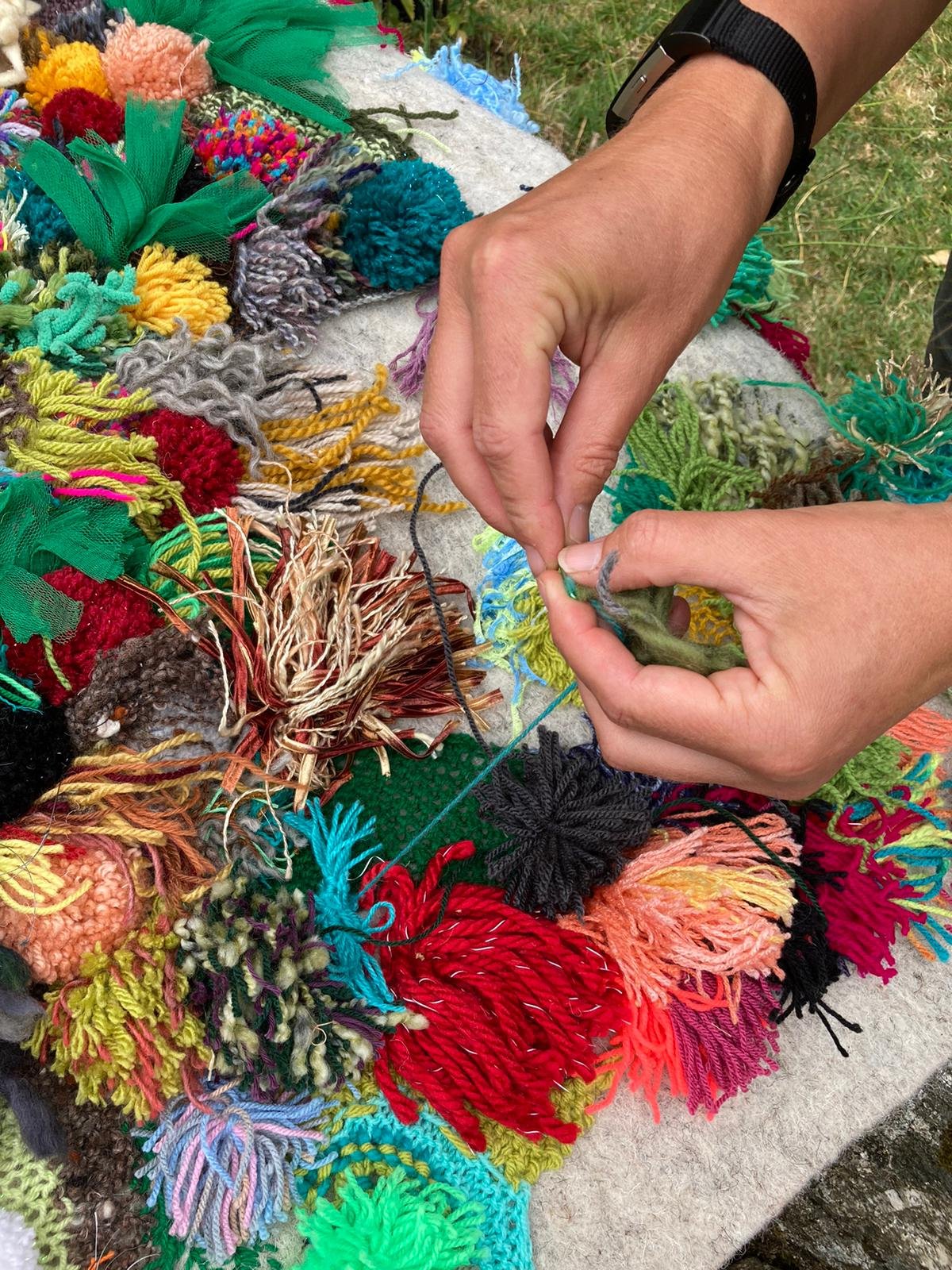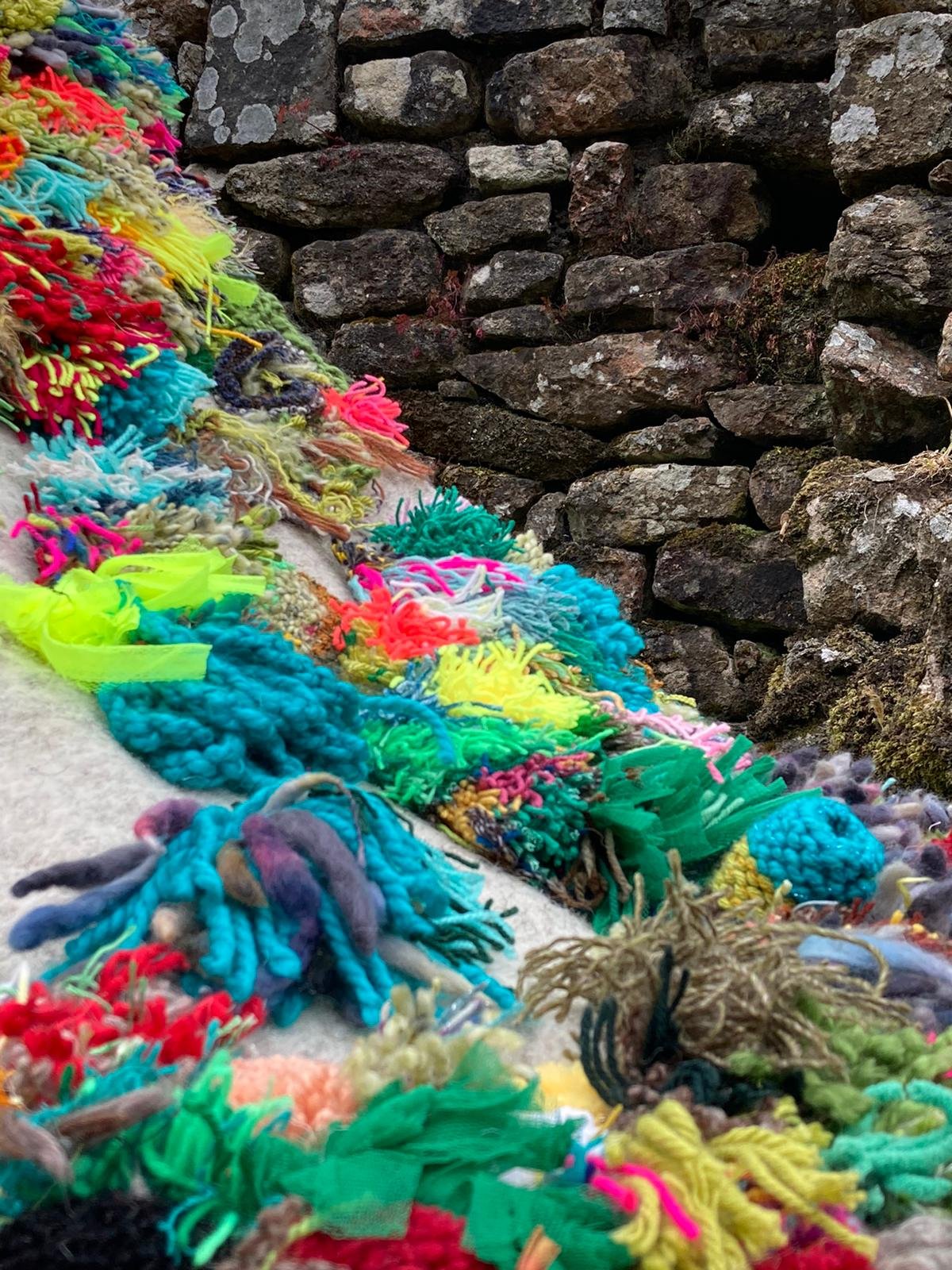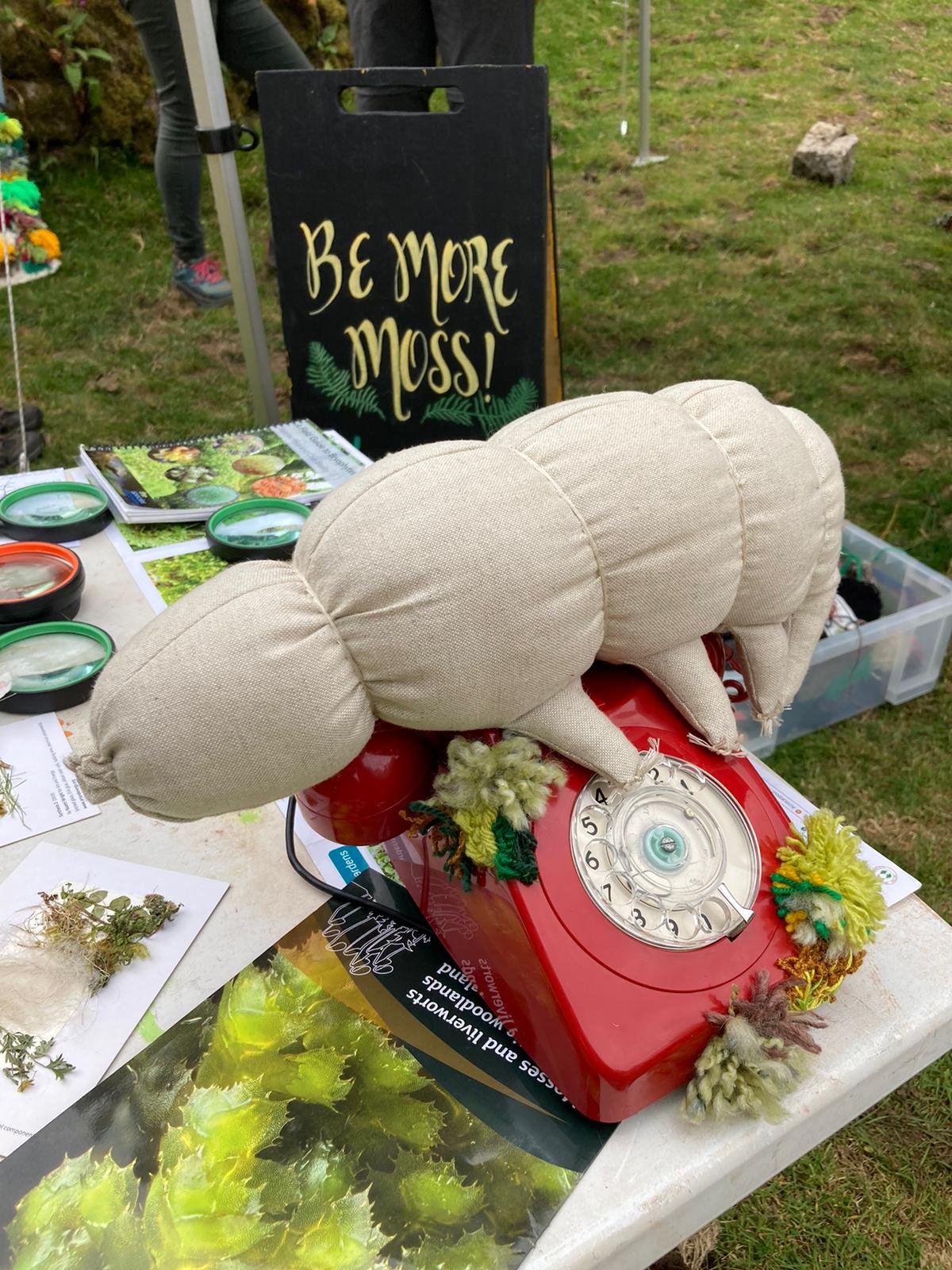In Moss and Moor at Challacombe Farm
Quite a crowd came along for this event at Challacombe Farm, Dartmoor - they turned up keen and early! Surrounded by Moor, with a stream and peaty wetland meadows, this farm holds wonderful wildlife rich land that is managed for nature.
We have been popping by Challacombe farm for over a year, looking at the mosses, taking small samples, being with the moss and the farm to inspire ideas for our project: How to Bury the Giant. This event, In Moss and Moor, has been supported by Devon Environment Foundation.
First we introduced the magical mosses to the audience for their remarkable ability to Bury the carbon and climate emergency Giant. Mosses grow from the cracks in pavements to the wilds of the moorland. They need nurturing, being tiny plants that make a massive difference to our environment. Challacombe farm is lucky, it drips with mosses in the autumn and winter! At this time of year they dry up a little, waiting for the rain change to come and then spring back to life. It is this resilience that interests us.
The bright green exuberant mosses!
Locally we have been trying to grow small batches of sphagnum moss found in the wet meadows from the farm. This has been challenging in the hot and dry weather, but we had enough to encase in felted nests of sheeps fleece also from the farm. We all planted them out to help restore a wet meadow habitat with its new pools and scrapes. Sphagnum, bog or pompom moss is the moss that creates peat, traps carbon, makes oxygen, stores water, covers exposed areas to reduce carbon escape, creates the right conditions for other little plants and creatures to survive. It is truly a climate super hero, and yet it is small and un-noticed.
Planting the moss nests in damp corners of the meadow
Two felted fleecy nests holding sphagnum moss from the farm, fostered by Moretonhampstead Primary school and Moretonhampstead Allotments
Naomi Oakley and Mark Owen have lived and worked at the farm for years. We were told that people have lived and farmed there for more than 3500 years with evidence from stone hut circles just up the hill. Mark took everyone on a tour of this Duchy land regenerative farm, where they aim to improve the wildlife quality year on year. In carbon terms, this also means that they aim to hold a net gain in carbon in the near future. Mark explained the need to manage just the right number of cattle and sheep and horses to maximise the environments for continued nature recovery. The more wetland meadows in this valley mean new places for birds like Jack Snipe, less flooding down stream, as well as more habitat for sphagnum and carbon storage. We all walked down beside the gurgling stream telling its story, contemplating just how long the area had been farmed and how it provides a habitat for otters. Mark led us to the new wet areas of meadow, in which we planted the sphagnum moss.
Mark Owen sharing stories of the meadows at Challacombe Fram.
As we walked further we shared knowledge about the orchids, the marsh fritillary butterfly, the sphagnum moss, all sorts of other plants that grow in this part of Dartmoor, forming a beautiful living mosaic, made up of totally inter-dependent species. We compared farming practice, talked about the Commons and the archaeology on the hills, travel in the minibus from Moretonhampstead, cycling, other small climate action. Conversation drifted up the valley.
Then back at the farm the Mossy Carpet awaited us, our new mass participation artwork inspired by moss, asking for textile tufts and pom poms, knitted and embroidered mossy land and humps and hollows from all who want to help. It is a carpet that will express both the individuality and the community of mosses and at the same time the individuality of people and their communities.
Knitting, pom-poms and textile tufts on The Mossy Carpet.
After tea and cake we all had a go at getting creative, and discussed the tiny, yet significant actions moss takes to improve our environmnet. Could we all #bemoremoss?
Finally, the tardigrade telephone beckoned and asked for people to share their own small actions that together could change our environment for a brighter greener future. #tellthetardigrade








